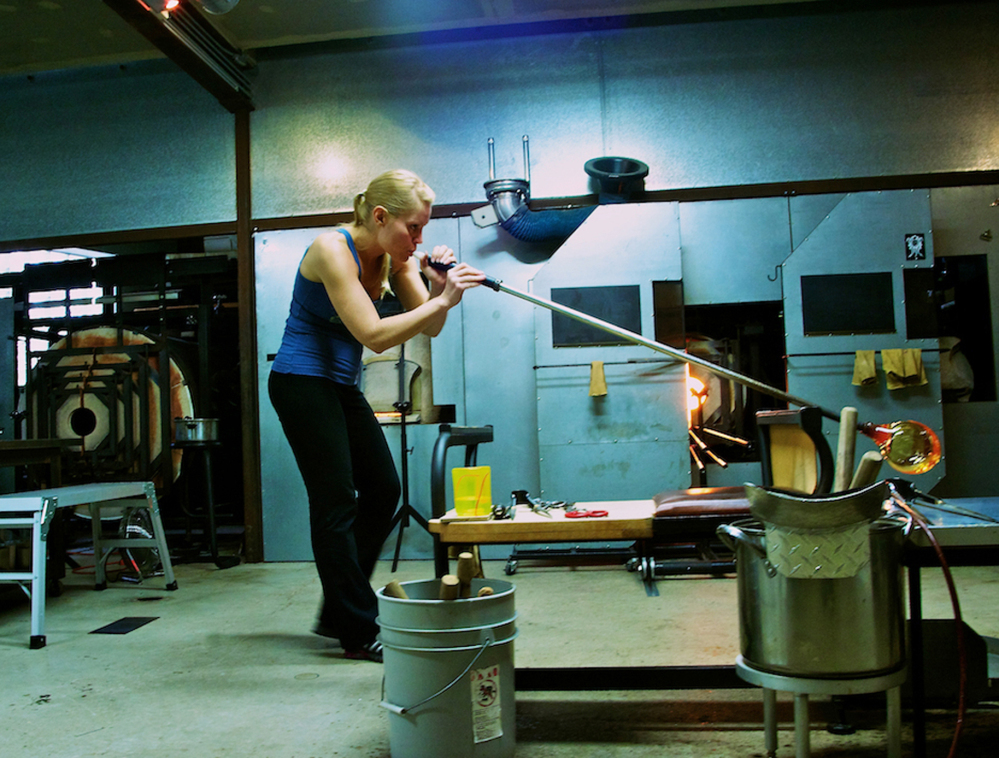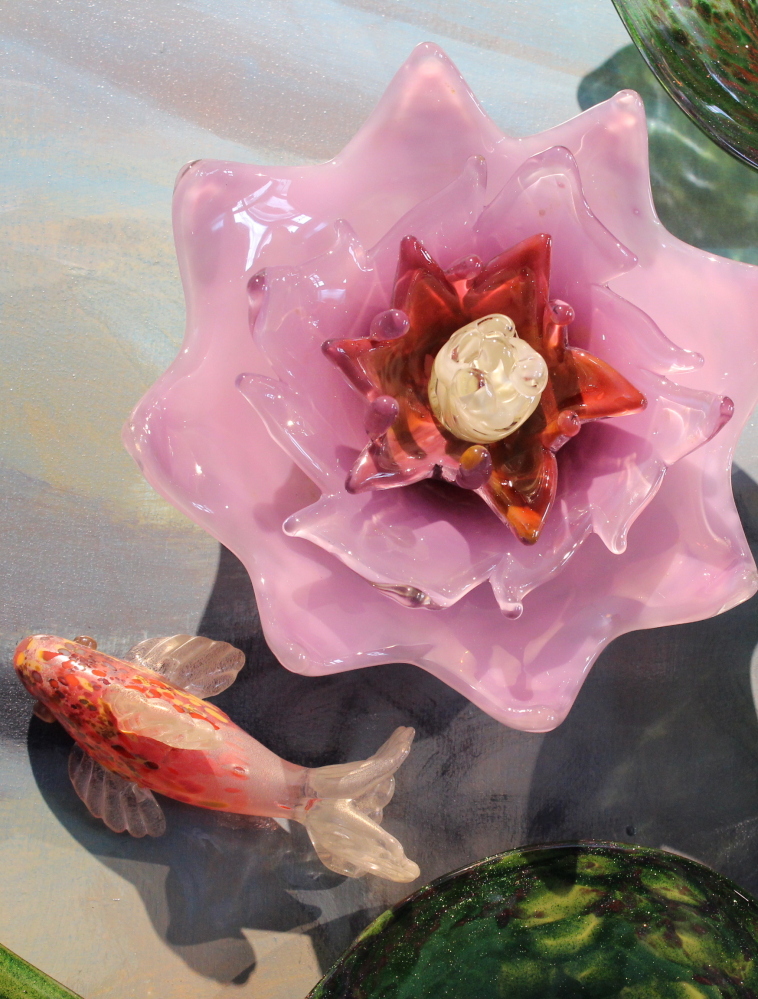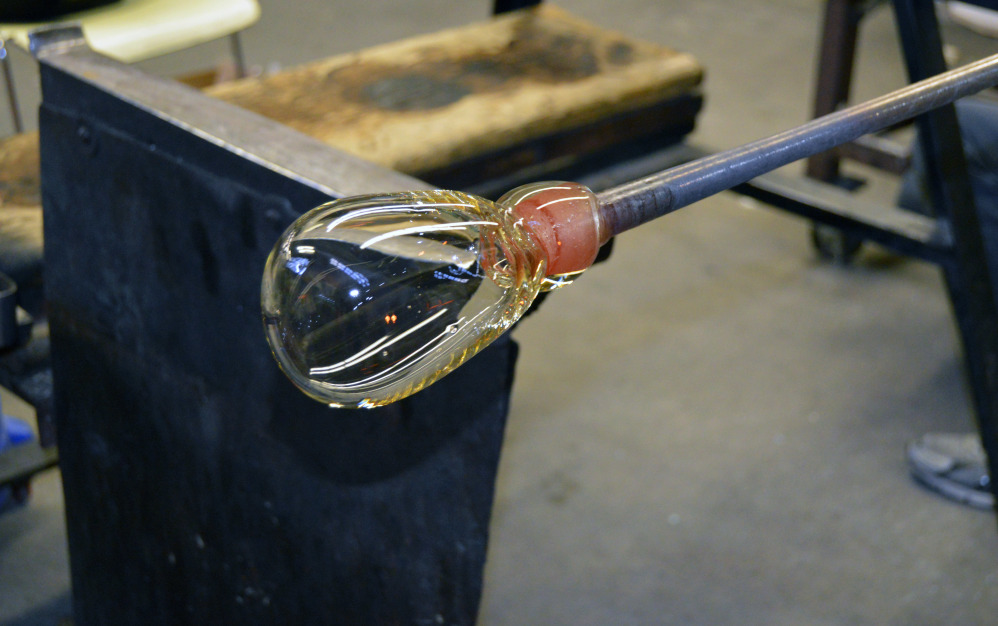BOSTON —On a chilly winter morning here, two furnaces inside the Massachusetts College of Art and Design burn at upwards of 2,000 degrees Fahrenheit. The heat is palpable as you enter the room, but it doesn’t seem to bother a group of students working nearby.
They’re here learning the ancient art of glassblowing, a technique of blowing a bubble with hot molten glass and forming it into objects. The craft has been around since ancient times, but a few modern advancements have helped make it available to more people.
“I found glass was the thing that caught my eye the most,” said Sara MacNeil, a 19-year-old sophomore at MassArt, who is majoring in glass.
Not too long ago, MacNeil might have had trouble accessing the artsy major – even at an art school.
The popularity of glassblowing in the United States has been steadily growing because of a development in the 1960s called the studio glass movement, when furnaces used to melt glass could be made much smaller. Until then, glasswork had to be done in an industrial furnace; now, the furnace is more the size of a small car.
“It’s been rapidly developing in the last 10 years,” said James McLeod, a professor of glass at the Massachusetts College Art and Design.
Because of the studio glass movement, glass as a medium went from utilitarian objects – drinkware and windows – to fine arts.
“It started being taught at colleges because it was so accessible,” said James Yood, a professor of art history at the School of the Art Institute of Chicago. “It left the manufacturer and went into the artists’ studios.”
College students trained in glassblowing became teachers, and glass studios began popping up in neighborhoods alongside urban mainstays like coffee shops, dry cleaners and pet groomers.
The studio glass movement all started with the work of Harvey K. Littleton, a professor at the University of Wisconsin-Madison, where he started the school’s first glass program and where student Dale Chihuly learned his art.
Some of glassblowing’s popularity might be due in part to Chihuly’s recognizable large-scale sculptures, which can be found around the world, from Las Vegas casinos to city botanic gardens and museums. Permanent Chihuly collections reside in at least 32 states.
Chihuly, who also started the glass program at the Rhode Island School of Design in 1969, is the “pied piper” of glass, Yood said. “Every significant American city has a place where people could go and blow glass,” he said.
Glass artist April Wagner, who owns Epiphany Glass studio in Pontiac, Michigan, said she has seen a greater interest in the technique lately.
She makes glass sculptures for corporate buildings, hospitals and public spaces, but occasionally offers workshops on glassblowing.
“People come in and try it for an hour,” Wagner said. “You can start painting in your garage, but you can’t necessarily start blowing glass in your garage.”
Her biggest goal for the workshops is to expose participants to the intricacies of glassblowing. “We wanted to increase the understanding of what it takes to create a glass work.” she said.
But Salida, Colorado-based glass artist Brice Turnbull said his career is still novel to many.
“A lot of people are still very surprised that anyone does this,” Turnbull said. “They’re surprised anyone can make a living doing it.”
Send questions/comments to the editors.





Success. Please wait for the page to reload. If the page does not reload within 5 seconds, please refresh the page.
Enter your email and password to access comments.
Hi, to comment on stories you must . This profile is in addition to your subscription and website login.
Already have a commenting profile? .
Invalid username/password.
Please check your email to confirm and complete your registration.
Only subscribers are eligible to post comments. Please subscribe or login first for digital access. Here’s why.
Use the form below to reset your password. When you've submitted your account email, we will send an email with a reset code.